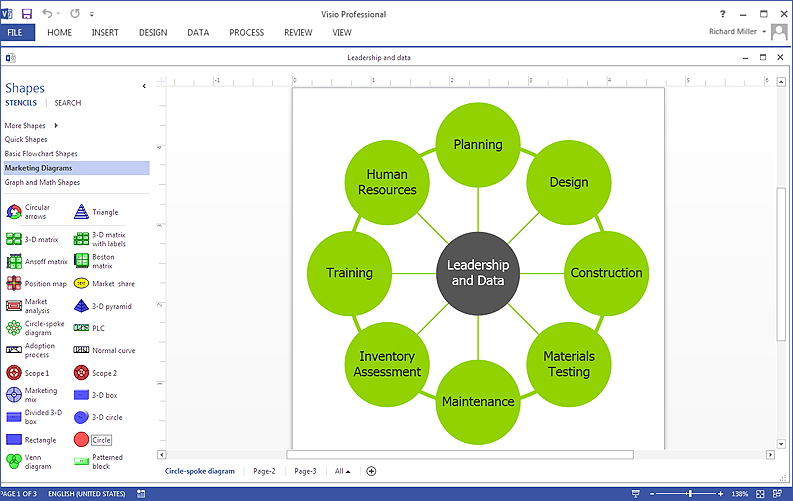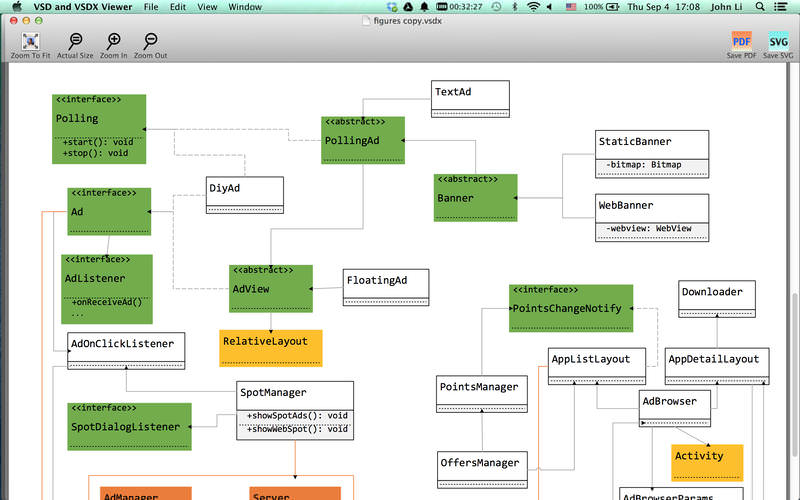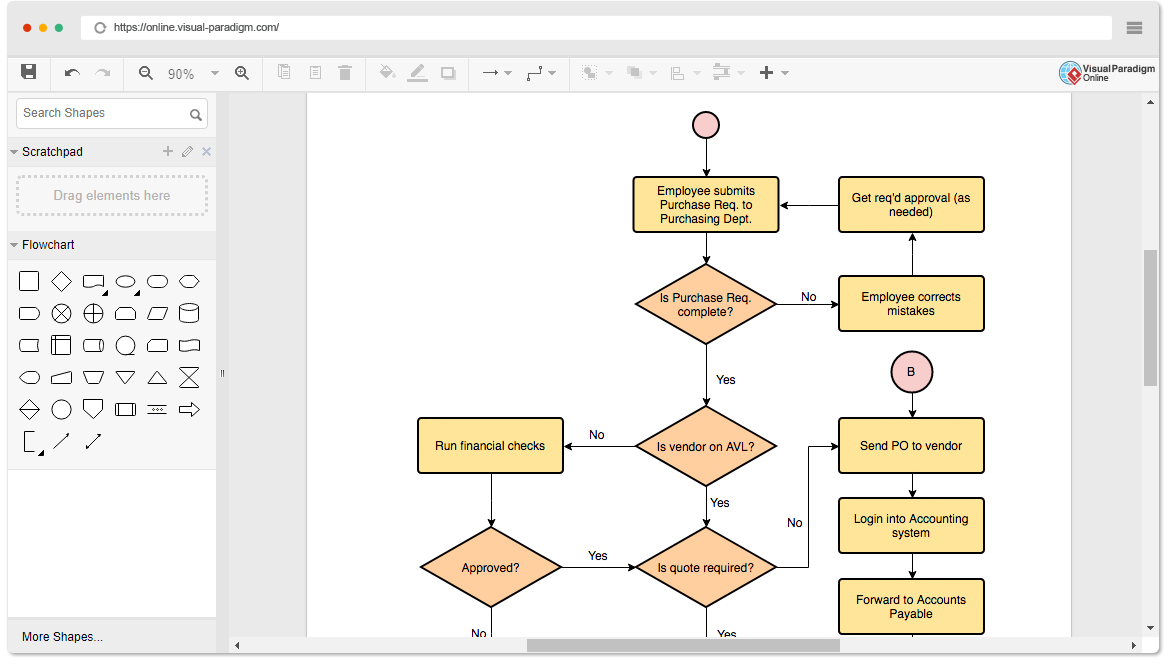To convert vsdx to vsd press the 'browse' button, then search and select the file vsdx you want to convert. Press the green 'convert' button and wait for your browser to download the file that you have you have converted before from vsdx to vsd. Visio Viewer 2016 can also open Visio XML drawings (.vdx files) saved in Visio 2002, 2003, and 2007. View a drawing with Visio Viewer. When you open a drawing with Visio Viewer, the drawing appears inside an Internet Explorer browser window. If a drawing has more than one page, the pages are available as tabs along the bottom of the viewer. Do you need to open a Microsoft Visio drawing (.VSDX file)? File Viewer Plus can open VSDX files! It allows you to view the drawing and convert it to other file formats, such as PDF, JPEG, and PNG. Open VSDX files without Microsoft Visio. Try File Viewer Plus today! Free 14-day trial. VSDX files are Visio 2013 drawing files, which you can read more about below. The VSDX file extension indicates to your device which app can open the file. However, different apps may use the same file extension for different types of data. So a VSDX opener may not be able to open all kinds of VSDX files. In this case, though, we only know of.
Files with xxx file extension can also be found as special embroidery files for the Compucon/Singer stitching machines.
There are 5 other file types using
the XXX file extension!
.xxx - Corel PaintShop Photo Pro album panorama
.xxx - Unreal Engine 3 game data
.xxx - TeslaCrypt 3.0 ransomware encrypted file
.xxx - help_dcfile ransomware affected file
.xxx - Starcraft game data
Bookmark & share this page with others:
XXX file extension- Compucon/Singer PSW embroidery design
What is xxx file? How to open xxx files?
The xxx file extension is used for Compucon/Singer PSW Embroidery format supported by various embroidery applications, like Embird Embroidery Software, Electric Quilt, etc.
It is also default format used by Compucon Embroidery Operating System (EOS).
The xxx file contains stitches design, stitch pattern, colors, density, size for embroidery machines.
Updated: February 25, 2021
The default software associated to open xxx file:
Company or developer:
BALARAD, s.r.o.
Embird Embroidery Software that can resize, split, edit, display, print and convert embroidery designs.

Related articles:
Help how to open:
Various embroidery software, such as Embird Embroidery Software can open *.xxx embroidery files.

How to convert:
It might be possible to open *.xxx files in embroidery software and save it to another embroidery file format.
Find conversions from xxx file:
Find converter to xxx file type:
Related links:
List of software applications associated to the .xxx file extension
Recommended software programs are sorted by OS platform (Windows, macOS, Linux, iOS, Android etc.)
and possible program actions that can be done with the file: like open xxx file, edit xxx file, convert xxx file, view xxx file, play xxx file etc. (if exist software for corresponding action in File-Extensions.org's database).
Hint:
Click on the tab below to simply browse between the application actions, to quickly get a list of recommended software, which is able to perform the specified software action, such as opening, editing or converting xxx files.
Software that open xxx file - Compucon/Singer PSW embroidery design
Programs supporting the exension xxx on the main platforms Windows, Mac, Linux or mobile. Click on the link to get more information about listed programs for open xxx file action.
Microsoft Windows:
Main software associated with xxx file by default:
Embird Embroidery Software
Other suggested software:
Generation Plus
Janome Digitizer Pro
OESD ARTsizer
ArtLink
Wilcom DecoStudio
Apple macOS / Mac OS X:
Multiplatform:
The Microsoft Information Protection SDK can apply the following to documents and emails:
Classification only
Classification and protection
Protection only
The Microsoft Information Protection SDK can also inspect the content of some file types using well-known sensitive information types or regular expressions that you define.
Use the following information to check which file types the Microsoft Information Protection SDK supports, understand the different levels of protection and how to change the default protection level, and to identify which files are automatically excluded (skipped) from classification and protection.
File types supported for classification only
The following file types can be classified even when they are not protected.
Adobe Portable Document Format: .pdf
Microsoft Project: .mpp, .mpt
Microsoft Publisher: .pub
Microsoft XPS: .xps .oxps
Images: .jpg, .jpe, .jpeg, .jif, .jfif, .jfi. png, .tif, .tiff
Autodesk Design Review 2013: .dwfx
Adobe Photoshop: .psd
Digital Negative: .dng
Microsoft Office: File types in the following table.
The supported file formats for these file types are the 97-2003 file formats and Office Open XML formats for the following Office programs: Word, Excel, and PowerPoint.
Office file type Office file type .doc
.docm
.docx
.dot
.dotm
.dotx
.potm
.potx
.pps
.ppsm
.ppsx
.ppt
.pptm
.pptx
.vdw
.vsd.vsdm
.vsdx
.vss
.vssm
.vst
.vstm
.vssx
.vstx
.xls
.xlsb
.xlt
.xlsm
.xlsx
.xltm
.xltx
Additional file types support classification when they are also protected. For these file types, see the Supported file types for classification and protection section.
For example, if a label General, applies classification and does not apply protection, you could apply the General label to a file named sales.pdf but you could not apply this label to a file named sales.txt.
Also, if a label Confidential All Employees applies classification and protection, you could apply this label to a file named sales.pdf and a file named sales.txt. You could also apply just protection to these files, without classification.

File types supported for protection
The Microsoft Information Protection SDK supports protection at two different levels, as described in the following table.
| Type of protection | Native | Generic |
|---|---|---|
| Description | For text, image, Microsoft Office (Word, Excel, PowerPoint) files, .pdf files, and other application file types that support a Rights Management service, native protection provides a strong level of protection that includes both encryption and enforcement of rights (permissions). | For all other applications and file types, generic protection provides a level of protection that includes both file encapsulation using the .pfile file type and authentication to verify if a user is authorized to open the file. |
| Protection | Files protection is enforced in the following ways: - Before protected content is rendered, successful authentication must occur for those who receive the file through email or are given access to it through file or share permissions. - Additionally, usage rights and policy that were set by the content owner when the files were protected are enforced when the content is rendered in either the Azure Information Protection viewer (for protected text and image files) or the associated application (for all other supported file types). | File protection is enforced in the following ways: - Before protected content is rendered, successful authentication must occur for people who are authorized to open the file and given access to it. If authorization fails, the file does not open. - Usage rights and policy set by the content owner are displayed to inform authorized users of the intended usage policy. - Audit logging of authorized users opening and accessing files occurs. However, usage rights are not enforced. |
| Default for file types | This is the default level of protection for the following file types: - Text and image files - Microsoft Office (Word, Excel, PowerPoint) files - Portable document format (.pdf) For more information, see the following section, Supported file types for classification and protection. | This is the default protection for all other file types (such as .vsdx, .rtf, and so on) that are not supported by native protection. |
You can change the default protection level that the Microsoft Information Protection SDK applies. You can change the default level of native to generic, from generic to native, and even prevent the Microsoft Information Protection SDK from applying protection.
File sizes supported for protection
Starting in Microsoft Information Protection SDK 1.6, the maximum default file size is 6 GB. This setting can be overridden if required. Lesser defaults for legacy Office platforms still apply.
For Office files:
Office application Maximum file size supported Word 2007 (supported by AD RMS only)
Word 2010
Word 2013
Word 201632-bit: 512 MB
64-bit: 512 MBExcel 2007 (supported by AD RMS only)
Excel 2010
Excel 2013
Excel 201632-bit: 2 GB
64-bit: Limited only by available disk space and memoryPowerPoint 2007 (supported by AD RMS only)
PowerPoint 2010
PowerPoint 2013
PowerPoint 201632-bit: Limited only by available disk space and memory
64-bit: Limited only by available disk space and memoryFor all other files:
To protect other file types, and to remove the protection on these file types using the SDK : The maximum file size is limited only by available disk space and memory.
Supported file types for classification and protection
Vsdx File Viewer
The following table lists a subset of file types that support native protection by the Microsoft Information Protection SDK, and that can also be classified.
These file types are identified separately because when they are natively protected, the original file name extension is changed, and these files become read-only. Note that when files are generically protected, the original file name extension is always changed to .pfile.
Warning
If you have firewalls, web proxies, or security software that inspect and take action according to file name extensions, you might need to reconfigure these network devices and software to support these new file name extensions.
| Original file name extension | Protected file name extension |
|---|---|
| .txt | .ptxt |
| .xml | .pxml |
| .jpg | .pjpg |
| .jpeg | .pjpeg |
| .ppdf [1] | |
| .png | .ppng |
| .tif | .ptif |
| .tiff | .ptiff |
| .bmp | .pbmp |
| .gif | .pgif |
| .jpe | .pjpe |
| .jfif | .pjfif |
Footnote 1
With the latest version of the Microsoft Information Protection SDK, the file name extension of the protected PDF document remains as .pdf.
Open Vsdx Files Mac
The next table lists the remaining file types that support native protection by the Microsoft Information Protection SDK, and that can also be classified. You will recognize these as file types for Microsoft Office apps. The supported file formats for these file types are the 97-2003 file formats and Office Open XML formats for the following Office programs: Word, Excel, and PowerPoint.
For these files, the file name extension remains the same after the file is protected by a Rights Management service.
| File types supported by Office | File types supported by Office |
|---|---|
| .doc .docm .docx .dot .dotm .dotx .potm .potx .pps .ppsm .ppsx .ppt .pptm .pptx .vsdm | .vsdx .vssm .vssx .vstm .vstx .xla .xlam .xls .xlsb .xlt .xlsm .xlsx .xltm .xltx .xps |
Limitations for container files, such as .zip, .msg files
Container files are files that include other files, with a typical example being .zip files that contain compressed files. Other examples include .rar, .7z, .msg files, .rpmsg files and PDF documents that include attachments.
Open Vsdx File In Internet Explorer

You can classify and protect these container files, but the classification and protection is not applied to each file inside the container. Similarly, a protected container file can be unprotected using the SDK, but the protection (if applied) to files inside the container will not be removed by protection removal operation on the container file recursively. The application developers are responsible for recursing and unprotecting any files within the containers.
Open Vsdx File Online
If you have a container file that includes classified and protected files, you must first extract the files to change their classification or protection settings.
